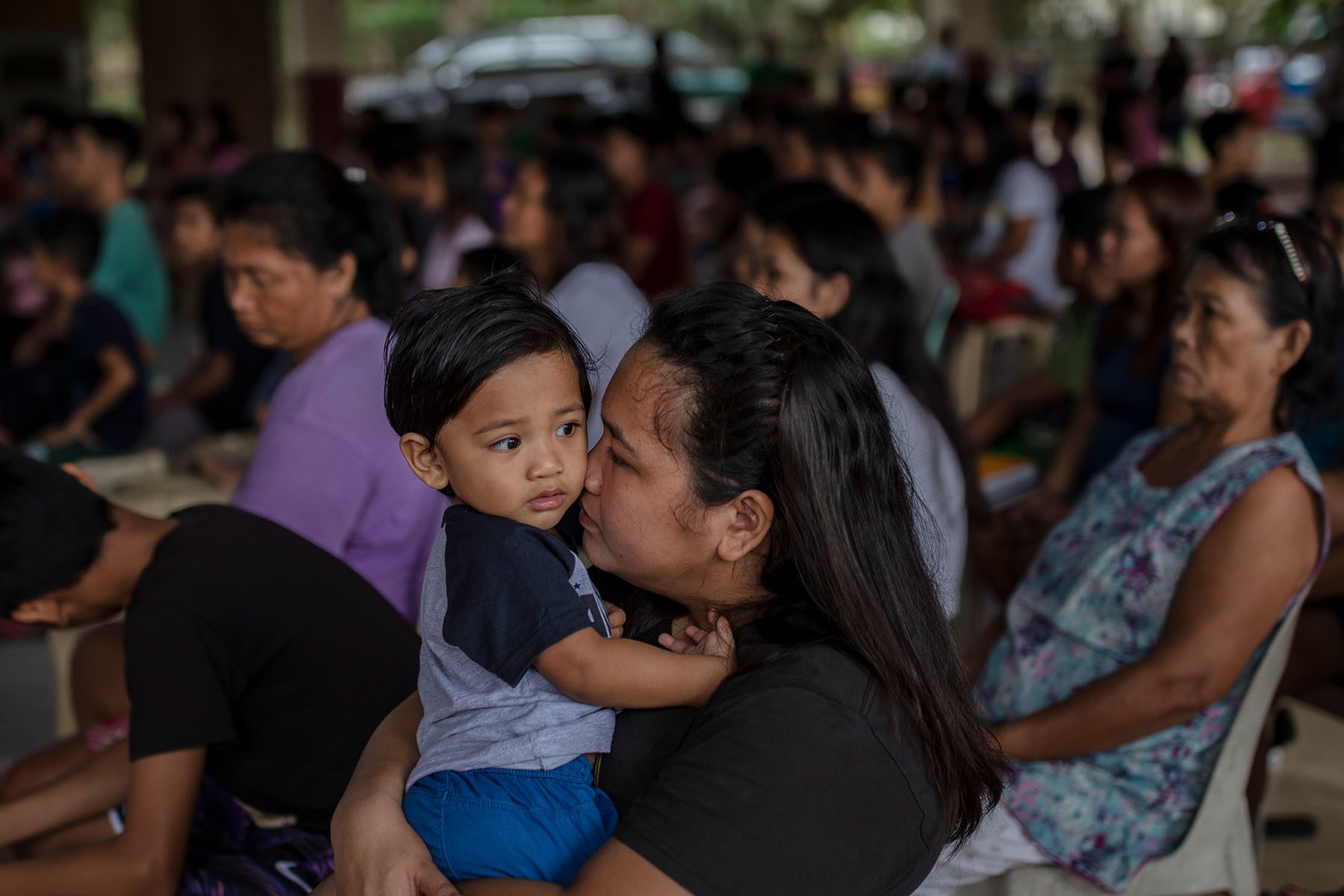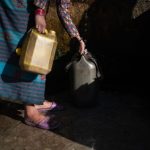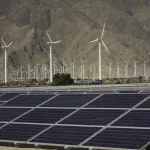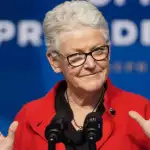To avoid the worst impacts of the climate crisis, over the next few years the world must adopt clean energy technologies like solar and wind on a massive scale, according to a report released Monday by the Intergovernmental Panel on Climate Change (IPCC).
Climate finance, or the distribution of money from wealthy countries to developing countries for climate projects, plays a key role in helping society make this transition. But this funding has the potential to further marginalize women and the LGBTQ+ community if it isn’t designed with their needs for safety, access to social services, or support for locally-led projects in mind. And, as the latest report noted, climate finance hasn’t done a great job of integrating these gender considerations. The United States is supposed to be a source for this funding — it has agreed to this, though like with many international agreements, there’s no enforcement mechanism and it hasn’t fulfilled its commitments.
Liane Schalatek, associate director of the Heinrich Boell Foundation in Washington D.C., a nonprofit that works at the intersection of gender equality and the environment, has dedicated over a decade of her career to tracking and monitoring climate finance. The 19th spoke with her about her research, some of which was cited in the latest IPCC report, to better understand what gender responsive climate finance — a wonky string of words — really means for women on the ground.
This conversation has been edited for length and clarity.
Jessica Kutz: To begin, what is climate finance? And what role do wealthy countries like the United States play in that funding?
Liane Schalatek: There is no universally accepted definition of climate finance, but it usually refers to financing that is made available specifically for climate action — mostly for reducing emissions — or funding that helps people, communities, ecosystems and countries adapt to the impacts of climate change.
The role of a developed country like the United States is multiple. They are tasked with providing financing to help developing countries that have contributed less to emissions over time to accelerate their own transition away from fossil fuels toward clean energies and to adapt to already occurring climate impacts.
The recent IPCC report dedicates a section to the state of “gender-responsive climate finance,” citing much of your research. Can you explain what that means? Why is it important?
It means you are taking into account that men and women and diverse gender groups have different capabilities to address climate change, but they are also impacted by climate change differently. Women are more severely hit by climate catastrophes like droughts or hurricanes. Sometimes it’s as simple as the fact that women in some cultures might not be taught to swim, or are restricted from leaving the household; that when they flee, they usually have small children they take care of; they might not get access to information in a timely manner. There are a lot of cultural and gender norms that inhibit women from participating equally in decision-making and from accessing finance for climate action.
Gender-responsive climate finance does two things. First, it acknowledges that there are those differences. We have to take the differences between men and women and marginalized gender groups like LGBTQ communities into account. Second, it’s not just that we are aware, but that we respond to it by taking that into account in what and how we finance.
Ideally, we would have a 100 percent gender-responsive climate provision. We are far from it. A lot of the awareness-raising has been done, including in a lot of climate funds that are out there, but the implementation is still lacking.
What would be some examples of making climate finance gender-responsive?
Let’s take, for example, public transportation. The latest IPCC report points out that it’s absolutely necessary to move away from individual modes of transport to mass public transport, and where possible to electrify that transport. In many developing countries you might now be looking at creating a dedicated bus transit line that is electric.
For that to be gender-responsive, you take a lot of things into account. You start out with the premise that says a mass transport solution is only as good to the extent that it can be used by everybody — that it’s really accessible and affordable for women. For example, there are safety concerns for women. In many countries you have sexual harassment and abuse in public transportation, so that could be a consideration of having dedicated buses for women or dedicated compartments in public transport for women. It could also be a question about the lighting of a public transport station.
How are we doing on an international level when it comes to incorporating gender?
We’re doing better than 10 years ago, but we are not doing as well as we should be doing in this day and age. There is some inertia in the system.
It’s not just enough to take a project that you wanted to do anyway and add a little bit of gender work into it. This is not going to provide the larger systemic and cultural shift that you need. When we’re talking about addressing climate change, it’s all about shifting societal behaviors, and that includes working on and addressing gender discrimination and gender inequalities that are expressing themselves in energy, agricultural and financial systems and in political participation. All of them can and should be addressed with some of the targeted climate actions as well.
There is political resistance in the system. There is some worry that there might be too much focus on gender when the focus should be on increasing the financing amounts overall. You need to increase the overall amount of climate finance provided to developing countries, but also insist that as part of climate justice, you can’t just stop when money reaches a country’s border. You have to look at justice, equality and equity and how that funding is being distributed within the country.
Are there any examples of gender equality being impacted negatively by climate projects that don’t take gender into account?
It’s hard to point out a specific project, but rather it’s a lot of approaches that are going the wrong way. Large energy infrastructure projects are a good example. So when you have, for example, hydro dams, those disenfranchise a lot of people because it causes resettlement, which might take away people’s livelihood. In all of those circumstances you hurt women disproportionately because of their caretaking role and because of the fact that they usually don’t have ownership of land. So even if there is a resettlement and a compensation, they usually don’t get it.
What would you like countries like the United States to take away from this latest IPCC report when it comes to incorporating gender in decision-making? What would be some best practices moving forward?
The U.S. has to provide more climate finance. When it is not provided women are hurt, because then you don’t have the necessary investments. This funding should also be in the form of grants. If you provide grants where you don’t have to repay it to the contributing country, there is more flexibility and you are able to finance and support social systems. When you are lacking social systems, whether it’s health care or it’s child care, it’s women who are the defenders of last resort. We saw this during the COVID crisis in the United States.
If climate finance is provided as a loan to a developing country, many of which are horribly in debt already, that means they are missing the financial flexibility to support and strengthen social systems.
It is widely known that women are disproportionately impacted by climate change, but they are also often seen as being at the center of locally led solutions. Why is that and how could climate finance better connect to their work?
Most often the leadership of women is more developed at this community level than in the national or in the planning context. It’s these locally led solutions that are centrally beneficial to the community. This is also where the lives of many families are most directly impacted. This is where some of the specific experiences of women as stewards of agricultural production or environmental protection come to bear, including some of the traditional knowledge or Indigenous knowledge that women have traditionally through their role as caretakers and providers.
This is, unfortunately, something that is not sufficiently recognized or financially compensated. It’s really hard to track how much of the climate finance really reaches them. But there are some numbers out there that estimate it could be less than 10 percent that goes directly to the local area. The assumption is that there is trickle down happening but it’s very different from specifically making it available to the local level.
Local women’s groups, women’s cooperatives and feminist groups working in the community received a tiny, tiny, amount of climate finance: Less than 1 percent. So part of the empowerment is finding ways to give some of those groups direct access to funding.







